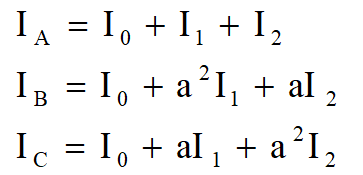The circuit that describes a single line to ground fault in a system with an ungrounded neutral is:

I neglect capacitance between phases and only look at capacitance to ground. The definition of zero sequence current is $$I^{(0)} = \frac{1}{3}(I_1 + I_2 + I_3)$$ But if apllied to the circuit above, Kirchoff current law should state that:$$(I_1 + I_2 + I_3) = 0$$ So how can there be a zero sequence current in this circuit? What am I missing here?




